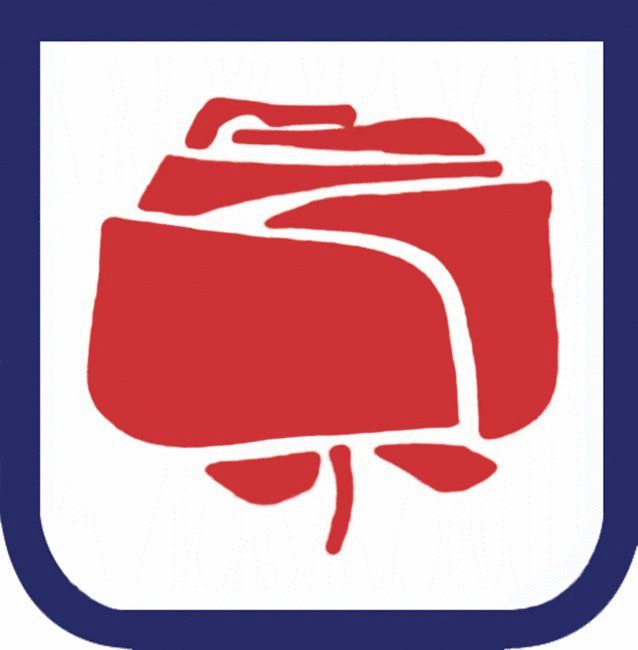|
Plužna
Plužna () is a settlement in the Municipality of Bovec in the Slovenian Littoral, Littoral region of Slovenia. Geography The source of Glijun Creek is located in Plužna, about west of the village center. Most of the Alpine skiing, slopes of the Kanin Ski Resort are located around and above Plužna. Church The church in the village is dedicated to Saint Nicholas. References External links *Plužna on Geopedia Populated places in the Municipality of Bovec {{Bovec-geo-stub ... [...More Info...] [...Related Items...] OR: [Wikipedia] [Google] [Baidu] |
Municipality Of Bovec
The Municipality of Bovec ( or ; ) is a municipality in northwestern Slovenia. Its center is the town of Bovec. , its mayor is Valter Mlekuž. Geography The northern parts of the municipality up the Trenta Valley to the peaks of Mts. Mangart, Jalovec, and Triglav are located within Triglav National Park, but not Bovec itself. Two of the most important mountain passes in the Julian Alps are located in the Municipality of Bovec: the Predil Pass on the border between Slovenia and Italy in the northwest, and the Vršič Pass in the northeast, which connects the Soča Valley to Kranjska Gora in the neighbouring Slovenian region of Upper Carniola. In the southwest the Učja (Uccea) Pass connects Bovec with the Resia Valley in Italy. Settlements In addition to the municipal seat of Bovec, the municipality also includes the following settlements: * Bavšica * Čezsoča * Kal–Koritnica * Lepena * Log Čezsoški * Log pod Mangartom * Plužna * Soča * Srpenica * Strmec na Prede ... [...More Info...] [...Related Items...] OR: [Wikipedia] [Google] [Baidu] |
Flag Of Slovenia
The national flag of Slovenia () features three equal horizontal bands of white (top), blue, and red, with the coat of arms of Slovenia located in the upper hoist side of the flag centred in the white and blue bands. The coat of arms is a shield with the image of Mount Triglav, Slovenia's highest peak, in white against a blue background at the centre; beneath it are two wavy blue lines representing the Adriatic Sea and local rivers, and above it are three six-pointed golden stars arranged in an inverted triangle which are taken from the coat of arms of the Counts of Celje, the great Slovene dynastic house of the late 14th and early 15th centuries. The Slovenian flag's colours are considered to be Pan-Slavism, pan-Slavic, but they actually come from the Middle Ages, medieval coat of arms of the Holy Roman duchy of Carniola, consisting of 3 stars, a mountain, and three colours (red, blue, yellow), crescent. The existing Slovene tricolor, Slovene tricolour was raised for the first t ... [...More Info...] [...Related Items...] OR: [Wikipedia] [Google] [Baidu] |
Slovenia
Slovenia, officially the Republic of Slovenia, is a country in Central Europe. It borders Italy to the west, Austria to the north, Hungary to the northeast, Croatia to the south and southeast, and a short (46.6 km) coastline within the Adriatic Sea to the southwest, which is part of the Mediterranean Sea. Slovenia is mostly mountainous and forested, covers , and has a population of approximately 2.1 million people. Slovene language, Slovene is the official language. Slovenia has a predominantly temperate continental climate, with the exception of the Slovene Littoral and the Julian Alps. Ljubljana, the capital and List of cities and towns in Slovenia, largest city of Slovenia, is geographically situated near the centre of the country. Other larger urban centers are Maribor, Ptuj, Kranj, Celje, and Koper. Slovenia's territory has been part of many different states: the Byzantine Empire, the Carolingian Empire, the Holy Roman Empire, the Kingdom of Hungary, the Republic of Venice ... [...More Info...] [...Related Items...] OR: [Wikipedia] [Google] [Baidu] |
Slovenian Littoral
The Slovene Littoral, or simply Littoral (, ; ; ), is one of the traditional regions of Slovenia. The littoral in its name – for a coastal-adjacent area – recalls the former Austrian Littoral (''Avstrijsko Primorje''), the Habsburg possessions on the upper Adriatic coast, of which the Slovene Littoral was part. Today, the Littoral is often associated with the Slovenian ethnic territory that, in the first half of the 20th century, found itself in Italy to the west of the Rapallo Border, which separated a quarter of Slovenes from the rest of the nation, and was strongly influenced by Italian fascism. Geography The region forms the westernmost part of Slovenia, bordering the inter-municipal union of Giuliana in the region of Friuli-Venezia Giulia of Italy. It stretches from the Adriatic Sea in the south up to the Julian Alps in the north. The Slovene Littoral comprises two traditional provinces: Goriška and Slovene Istria. The Goriška region takes its name from th ... [...More Info...] [...Related Items...] OR: [Wikipedia] [Google] [Baidu] |
Statistical Regions Of Slovenia
The statistical regions of Slovenia are 12 administrative entities created in 2000 for legal and statistical purposes. Division By a decree in 2000, Slovenia has been divided into 12 statistical regions (Nomenclature of Territorial Units for Statistics, NUTS-3 level), which are grouped in two cohesion regions (NUTS-2 level). The statistical regions have been grouped into two cohesion regions are: *Eastern Slovenia (''Vzhodna Slovenija'' – SI01), which groups the Mura, Drava, Carinthia, Savinja, Central Sava, Lower Sava, Southeast Slovenia, and Littoral–Inner Carniola regions. *Western Slovenia (''Zahodna Slovenija'' – SI02), which groups the Central Slovenia, Upper Carniola, Gorizia, and Coastal–Karst regions. Sources Slovenian regions in figures 2014 See also *List of Slovenian regions by Human Development Index *Municipalities of Slovenia *Traditional regions of Slovenia References External links Regions Stat.si (accessed 15 December 2020). Map of st ... [...More Info...] [...Related Items...] OR: [Wikipedia] [Google] [Baidu] |
Gorizia Statistical Region
The Gorizia Statistical Region () is a statistical region in western Slovenia, along the border with Italy. It is named after the Italian town of Gorizia (the feminine adjective ''goriška'' comes from the Slovenian name for Gorizia: ''Gorica''). The Julian Alps, the Soča River, and the Vipava Valley are the most prominent natural features of this region. It contributed just over 5% to total national GDP in 2012, but in terms of GDP per capita it ranked fourth in the country. In the same year, disposable income per capita in the region the highest, in second place behind the Central Slovenia Statistical Region. Housing stock estimates indicate that at the end of 2013 the region had the highest share of dwellings with three or more rooms (around 70%). The share of single-room dwellings was less than 10%. Dwellings here are larger than the Slovenian average, with 37 m2 of usable floor space per person on average. The number of cars per 1,000 population is also the highest in Slov ... [...More Info...] [...Related Items...] OR: [Wikipedia] [Google] [Baidu] |
Municipalities Of Slovenia
Slovenia is divided into 212 municipalities (Slovene language, Slovene: ''občine'', singular''občina''), of which 12 have urban (metropolitan) status. Municipalities are further divided into local communities and districts. Slovenia has the largest number of first-level administrative divisions of any country. The municipalities vary considerably in size and population, from the capital Ljubljana with more than 280,000 inhabitants to Hodoš with fewer than 400. Urban status is not granted strictly on the basis of population; the smallest urban municipality, Urban Municipality of Slovenj Gradec, Slovenj Gradec, has less than half as many inhabitants as the most populous non-urban municipality, Municipality of Domžale, Domžale. Slovene language, Slovene is the official language in all municipalities. Hungarian language, Hungarian is the second official language of three municipalities in Prekmurje: Dobrovnik/Dobronak, Hodoš/Hodos, and Lendava/Lendva. Italian language, Italian ... [...More Info...] [...Related Items...] OR: [Wikipedia] [Google] [Baidu] |
Alpine Skiing
Alpine skiing, or downhill skiing, is the pastime of sliding down snow-covered slopes on skis with fixed-heel Ski binding, bindings, unlike other types of skiing (Cross-country skiing, cross-country, Telemark skiing, Telemark, or ski jumping), which use skis with free-heel bindings. Whether for recreation or for sport, it is typically practiced at ski resorts, which provide such services as ski lifts, artificial snow making, snow grooming, restaurants, and ski patrol. "Piste, Off-piste" skiers—those skiing outside ski area boundaries—may employ snowmobiles, heliskiing, helicopters or Snowcat, snowcats to deliver them to the top of a slope. Back country skiing, Back-country skiers may use specialized equipment with a free-heel mode, including 'sticky' Ski skins, skins on the bottoms of the skis to stop them sliding backwards during an ascent, then locking the heel and removing the skins for their descent. Alpine ski racing has been held at the Alpine skiing at the Win ... [...More Info...] [...Related Items...] OR: [Wikipedia] [Google] [Baidu] |
Kanin Ski Resort
Kanin-Sella Nevea is a joint Slovenian-Italian ski resort located on the slopes of Mt Kanin and Sella Nevea Pass at the Slovenian-Italian border. The nearest locality is Bovec. On the Italian side, Tarvisio Tarvisio ( German and ; ) is a (municipality) in the Regional Decentralization Entity of Udine, in the autonomous Friuli-Venezia Giulia region of Italy. Geography The town is in the Canal Valley (''Val Canale'') between the Carnic Alps and Ka ... and Chiusaforte are the closest settlements. It has a total of of ski slopes and of sledding tracks. It is the only Slovenian ski resort at above sea level. The Slovenian part of the Kanin Ski Resort was closed in 2013 though it was expected to be reopened in winter 2016/17. Other activities *Cross country skiing (Log pod Mangartom, Letališče Bovec, Sella Nevea) *Sledding (5 km) & hiking Ski slopes External links - official site bovecskirental.com- Ski Rental Office in Bovec - Sella Nevea web site (Italian side) ... [...More Info...] [...Related Items...] OR: [Wikipedia] [Google] [Baidu] |
Saint Nicholas
Saint Nicholas of Myra (traditionally 15 March 270 – 6 December 343), also known as Nicholas of Bari, was an early Christian bishop of Greeks, Greek descent from the maritime city of Patara (Lycia), Patara in Anatolia (in modern-day Antalya Province, Turkey) during the time of the Roman Empire. Because of the many miracles attributed to his intercession, he is also known as Nicholas the Wonderworker. Saint Nicholas is the patron saint of sailors, merchants, archers, repentant thieves, children, brewers, pawnbrokers, toymakers, unmarried people, and students in various cities and countries around Europe. His reputation evolved among the pious, as was common for early Christian saints, and his legendary habit of secret gift-giving gave rise to the folklore of Santa Claus ("Saint Nick") through Sinterklaas. Little is known about the historical Saint Nicholas. The earliest accounts of his life were written centuries after his death and probably contain legendary elaborations. H ... [...More Info...] [...Related Items...] OR: [Wikipedia] [Google] [Baidu] |






